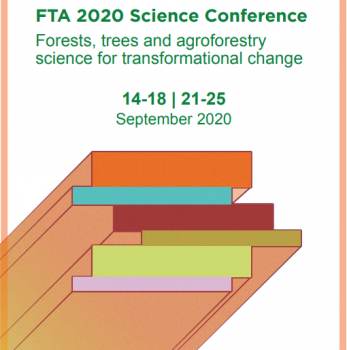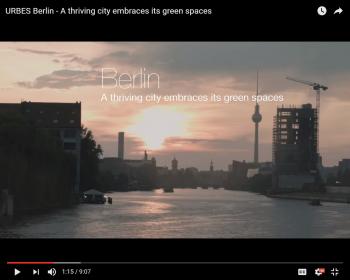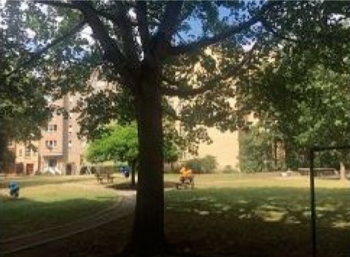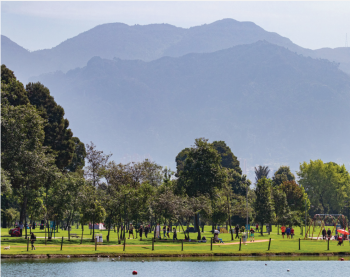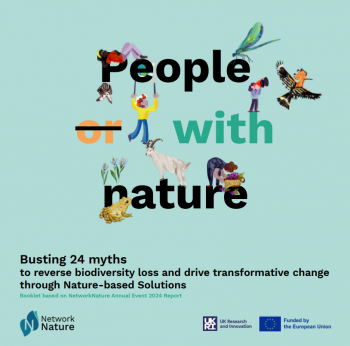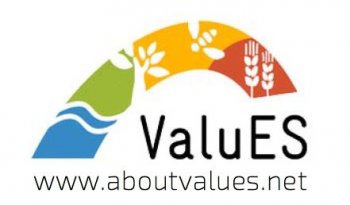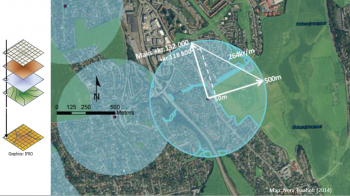Marketplace
The development of a Gender, Inclusion and Diversity Framework for inclusive Nature-based Solutions in cities
Evidence consistently shows that the benefits Nature-based Solutions generate are determined by several individual characteristics such as gender, age, sexuality, ethnicity and disability. As a result, Nature-based Solutions can perpetuate existing inequalities and even create new inequalities
The benefits and risks of rewilding
Rewilding aims to restore healthy ecosystems by creating wild, biodiverse spaces. It rebuilds ecosystems that have previously been modified by human disturbance, using the plant and animal life that would have been present had the disturbance never occurred. In doing so rewilding restores the
Conexus Deliverable 4.3: Ecosystem of guidelines and decision-support tools to stimulate NbS co-creation
The CONEXUS project has meticulously curated this Ecosystem of Guidelines to effectively disseminate the rich insights and practical knowledge gained through the comprehensive and action-oriented work on nature-based solutions across Latin America and Europe. This collection of guiding resources is
FTA 2020 Science Conference into Book of Abstracts
FTA ran a fully digital internal scientific conference that gathered all researchers involved in FTA from its partner organizations. The purpose of the conference was to present the most exciting research results, exchange experiences and lessons learned, and reflect on the way forward until the
Berlin - A thriving city embraces its green spaces (URBES video)
Berlin is one of the greenest cities in Europe, with more than 2,500 public green spaces, parks and gardens. These areas provide a home for natural diversity and a high quality of life for citizens. Over the next 15 years, the German capital is expected to grow by more than a quarter of a million
Not Simply Green: Nature-Based Solutions as a Concept and Practical Approach for Sustainability Studies and Planning Agendas in Cities
The concept of a nature-based solution (NbS) has been developed in order to operationalize an ecosystem services approach within spatial planning policies and practices, to fully integrate the ecological dimension, and, at the same time, to address current societal challenges in cities. It exceeds
CONEXUS Policy Brief 9 - Connectivity for people and biodiversity Learning from the green infrastructure systems in the City of Bogotá
This policy brief presents lessons for the integration of nature and green space systems in urban and territorial management instruments, based on the experience of the adoption of the Principal Ecological Structure (PES) in the city of Bogotá and the actions for its implementation.
Study: The application of an environmental performance framework for climate adaptation innovations on two nature-based adaptations
In this paper, they introduce and test a framework to qualitatively assess the environmental impact of climate adaptation innovations with the ambition to facilitate the implementation of these adaptations. The framework was designed to enable continuous environmentally conscious benchmarking based
Ecosystem Services Mapping - Oppla Webinar video
This webinar was the first of two sessions in a series, beginning the topic of ecosystem services mapping. Nynke Schulp spoke about the reliability of ecosystem services mapping, describing how methods of ecosystem services mapping have improved in recent years. Anis Guelmami spoke about
Guía para la Implementación de SbN en Quito
The application of NbS requires the involvement of a wide range of city agents: the policy makers, NGOs and residents They must be accompanied and involved along the way towards a greener city. We can not afford dispense with all existing local knowledge in our local communities. At the same time,
People with Nature: Busting 24 Myths to Reverse Biodiversity Loss and Drive Transformative Change through Nature-based Solutions.
As climate change and biodiversity loss intensify, the persistence of certain myths can hinder the transformative change needed to build more sustainable societies. Preconceived ideas rooted in outdated practices or incomplete truths can slow down this change by hampering awareness and obstructing
Nature-based solutions library in Sketchup 3D Warehouse
Developing the use of NBS in urban public spaces requires urban design practices to evolve. Planners and designers are increasingly aware of and informed about the challenges of climate change, but the use of NBS still comes up against practical barriers. Although there is now a great deal of
Nature4Cities - NoiseModelling
Among the tools developed in the scope of Nature4Cities, one is dedicated to the assessment of noise. NoiseModelling is a free and open-source tool designed to produce environmental noise maps on very large urban areas. Urban planners can use NoiseModelling in order to carry out impact studies
GIZ ValuES - Method Profile: InVEST models - Overview
InVEST is a family of tools to assess how distinct scenarios might lead to different ecosystem services and human well-being related outcomes in particular geographic areas. InVEST enables decision-makers to assess the tradeoffs associated with alternative choices and to identify areas where
CONEXUS Policy Brief 6 - Moving towards greener cities: Strategies to develop green spaces in vulnerable neighbourhoods
This policy brief explores the pressing need to address the inequitable distribution of green spaces in cities. The core case study will be the experience of a pilot project in Conchalí, Metropolitan Region of Santiago de Chile, which offers insights on strategies to address the challenges to
Hedonic property pricing
Hedonic pricing is the study of multi-correlation between environmental characteristics of a good and its sales price. The Hedonic property pricing (HPP) method can be used to estimate monetary values for ecosystem services that directly affect amenities of properties which in turn are reflected in
- Document
CASTANIBUS
Partnership to define and exchange "guidelines for the study, conservation and evaluation of chestnuts and the best type of management to obtain a quality product" thus to revitalize the "culture of chestnut cultivation" and the role of chestnut growers as "guardian of the
Nature4Cities - Implementation Model Database (IM-DB)
Nature4Cities project developed the Web-based database which allows to check different kinds of implementation models for NbS and NbS related pioneer projects. The database groups urban projects at different scales and in different European countries, using NbS.
URBAN GreenUP good practice kit
This kit will help you in using Nature-Based Solutions (NbS) to make your city more liveable and resilient to climate change. It offers a set of best practices and recommendations that cover all the stages of NbS implementation: how to select the right NbS, how to set one up, and how to monitor it
Green, hybrid, or grey disaster risk reduction measures: what shapes public preferences for nature-based solutions?
The OPERANDUM project has the primary aim of reducing risk from hydrometeorological hazards using NbS across Europe. It is unclear what DRR measures at-risk individuals may prefer on the green-hybrid-grey spectrum and what shapes their preferences. This study investigates the other factors,
- ‹ previous
- 46 of 55
- next ›




